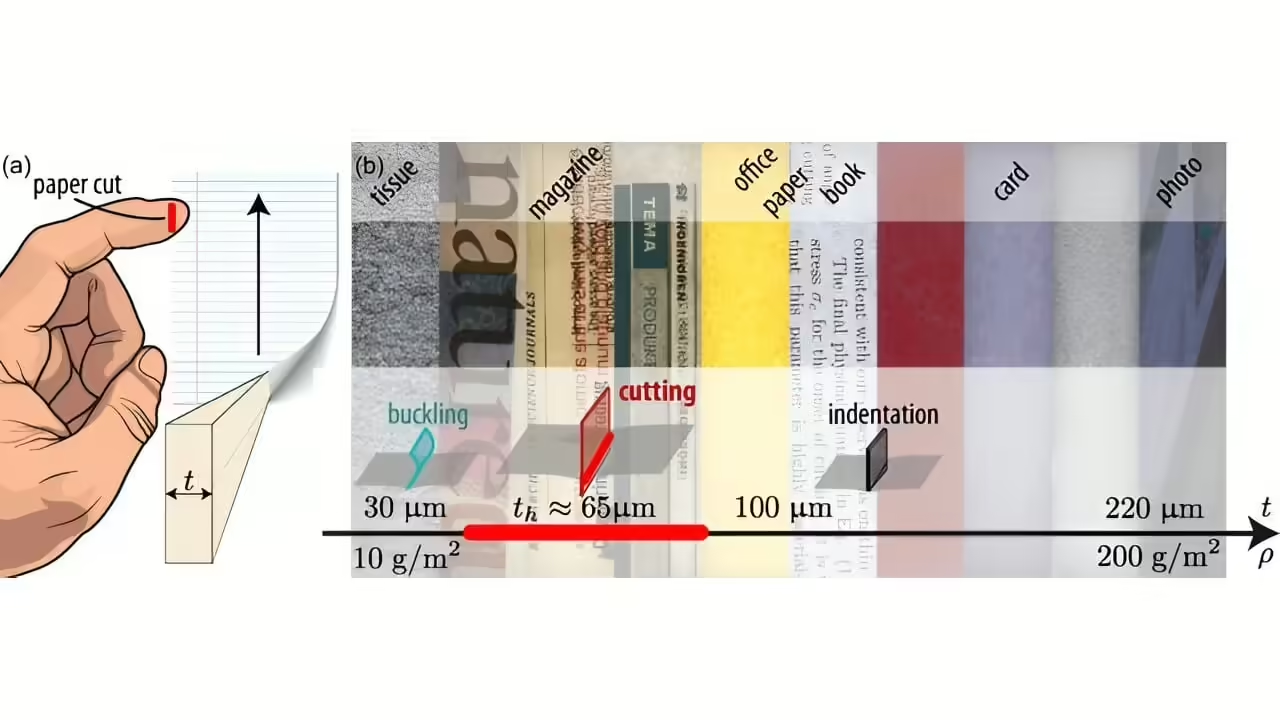Scientists from the Technical University of Denmark studied a problem that everyone faces: paper cuts. They found which types of paper are more likely to cause injuries and their technical characteristics.
Paper cuts can happen at any time. They are often accompanied by sharp pain, bleeding, irritation at the site of the injury, and an uncomfortably long recovery. Previous studies on paper cuts at home have focused on the risk of infection. But Danish scientists decided to focus on another topic: which types of paper are most likely to cause cuts. The scientists believe that with data on the likelihood of being cut, people will be more careful with “sharp” paper and suffer fewer injuries. The study was published in the journal Physical Review E.
To examine the ability of different types of paper to cause accidental cuts, the researchers used ballistic gelatin as an analogue of human skin, taking into account the paper’s thickness, strength, and the angle at which the cut occurred.
The results showed that the thinnest paper was not prone to nicking because it was more likely to bend when trying to cut the material, while thicker paper rarely cut because its surface distributed the pressure over a larger area.
The most dangerous types of paper were those that were neither too thick nor too thin, such as newspaper and printer paper. Post-it notes, printed magazines and office paper also pose a high risk of cuts. Napkins and photo paper were found to be less dangerous. It is important to note that the paper must be slightly bent for the cut to occur.
Scientists have also discovered that some types of paper, such as those used in dot matrix printers, have high cutting capacity. The most dangerous thickness was 65±5 micrometers. This thickness is usually matte paper with a density of 90 grams per square meter. The most likely place to cut is at an interaction angle of 20 degrees.
Researchers conducted an experiment: they attached such a piece of paper with a magnet to the scalpel, thus making a “paper machete”. No additional sharpening was required. It turned out that this homemade knife easily cuts vegetables, fruits and chicken skin at an angle of 10°.
Any type of paper is cut with an angle of interaction with ballistic gelatin of less than 7 degrees. For a “paper machete”, the combination of the most dangerous angle and the thickness of the paper varies depending on the width of the paper. Based on the data obtained, it can be assumed that the most dangerous is to quickly move your hands next to the sheets of paper that are barely coming out of a pile lying on the table, since their surface distributes the pressure over a larger area.
Source: Port Altele
